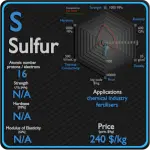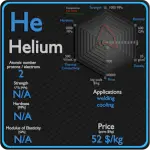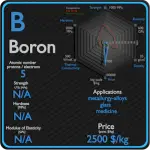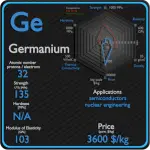This article contains comparison of key thermal and atomic properties of oxygen and silicon, two comparable chemical elements from the periodic table. It also contains basic descriptions and applications of both elements. Oxygen vs Silicon.
![]()
Oxygen and Silicon – About Elements

![]()
Source: www.luciteria.com
Oxygen and Silicon – Applications
Oxygen
Common uses of oxygen include production of steel, plastics and textiles, brazing, welding and cutting of steels and other metals, rocket propellant, oxygen therapy, and life support systems in aircraft, submarines, spaceflight and diving. Smelting of iron ore into steel consumes 55% of commercially produced oxygen. In this process, oxygen is injected through a high-pressure lance into molten iron, which removes sulfur impurities and excess carbon as the respective oxides, sulfur dioxide and carbon dioxide. Uptake of oxygen from the air is the essential purpose of respiration, so oxygen supplementation is used in medicine. Treatment not only increases oxygen levels in the patient’s blood, but has the secondary effect of decreasing resistance to blood flow in many types of diseased lungs, easing work load on the heart.
Silicon
Most silicon is used industrially without being purified, and indeed, often with comparatively little processing from its natural form. Silicon is a vital ingredient in aluminum, steel, and iron alloys. It is added as a fluxing agent for copper alloys. In the form of clay and sand, it is used to manufacture bricks and concrete; it is a valuable refractory material for high-temperature work, for example, molding sands for castings in foundry applications. Silica is used to make fire brick, a type of ceramic. Silicate minerals are also in whiteware ceramics, an important class of products usually containing various types of fired clay minerals (natural aluminium phyllosilicates). An example is porcelain, which is based on the silicate mineral kaolinite. Traditional glass (silica-based soda-lime glass) also functions in many of the same ways, and also is used for windows and containers. Hyperpure silicon metal and doped hyperpure silicon (doping with boron, phosphorous, gallium, or arsenic) are used in solar cells, transistors and semiconductors.
Oxygen and Silicon – Comparison in Table
| Element | Oxygen | Silicon |
| Density | 0.00125 g/cm3 | 2.33 g/cm3 |
| Ultimate Tensile Strength | N/A | 170 MPa |
| Yield Strength | N/A | 165 MPa |
| Young’s Modulus of Elasticity | N/A | 150 GPa |
| Mohs Scale | N/A | 7 |
| Brinell Hardness | N/A | 2300 MPa |
| Vickers Hardness | N/A | N/A |
| Melting Point | -209.9 °C | 1410 °C |
| Boiling Point | -195.8 °C | 3265 °C |
| Thermal Conductivity | 0.02598 W/mK | 148 W/mK |
| Thermal Expansion Coefficient | N/A | 2.6 µm/mK |
| Specific Heat | 1.04 J/g K | 0.71 J/g K |
| Heat of Fusion | (N2) 0.7204 kJ/mol | 50.55 kJ/mol |
| Heat of Vaporization | (N2) 5.56 kJ/mol | 384.22 kJ/mol |


















